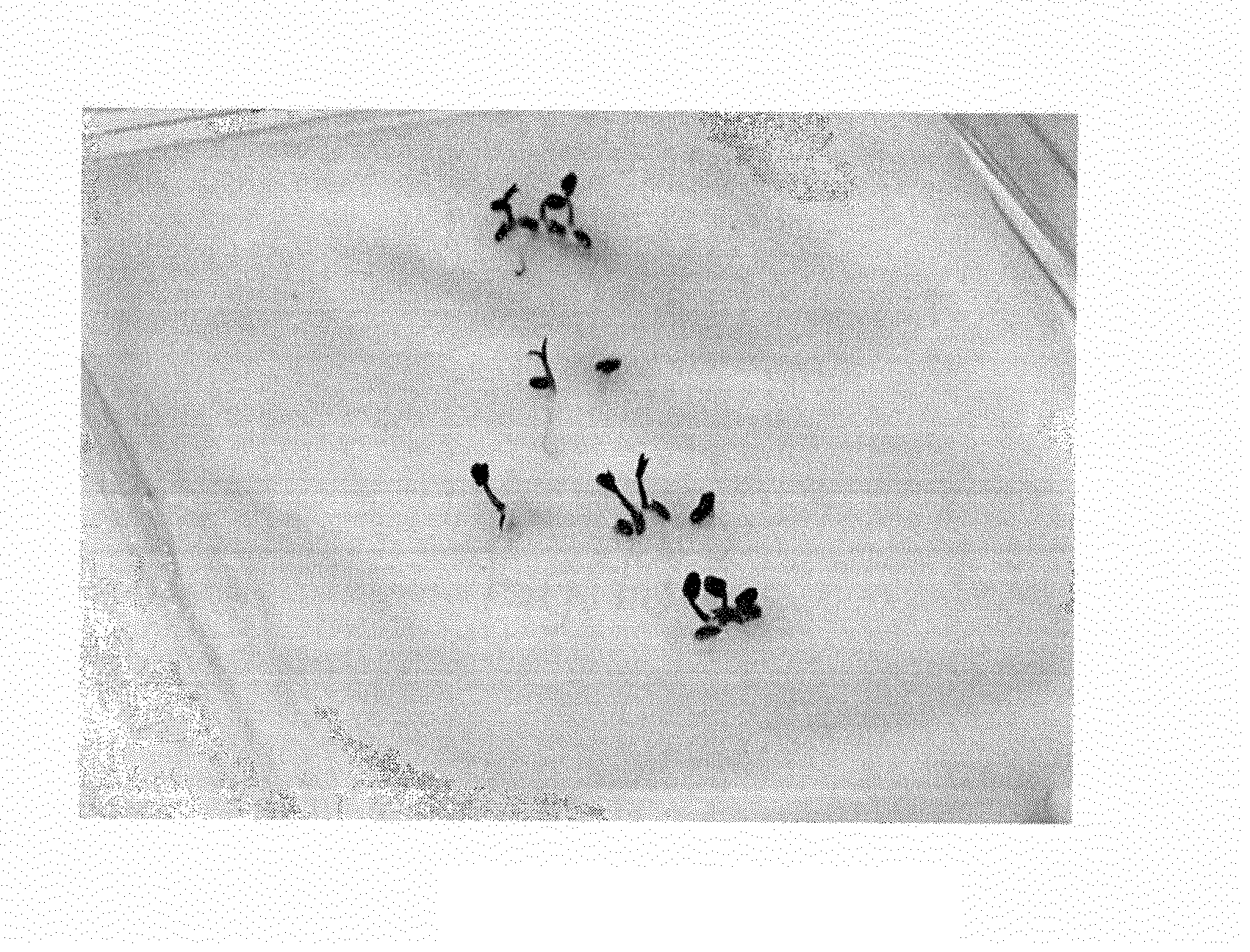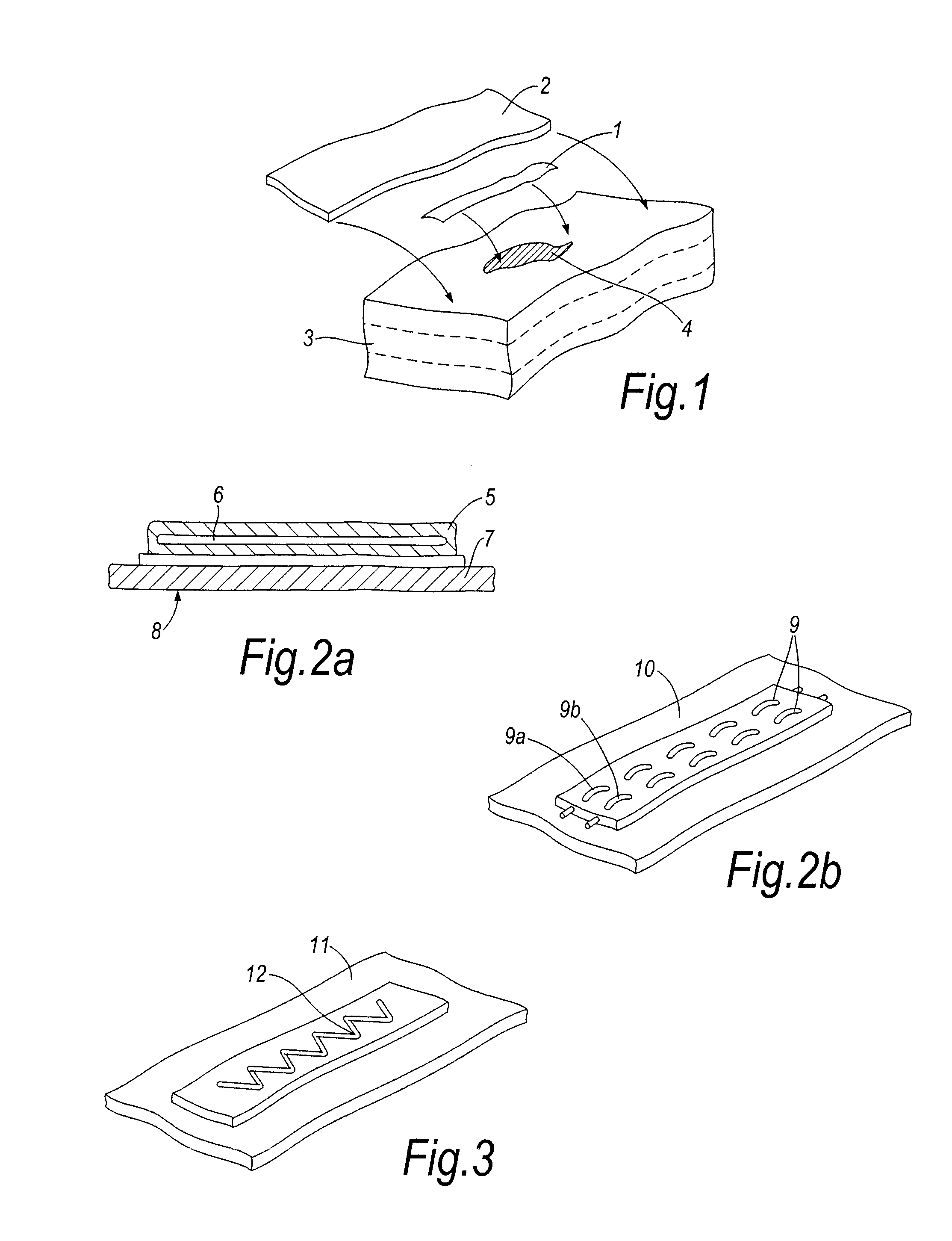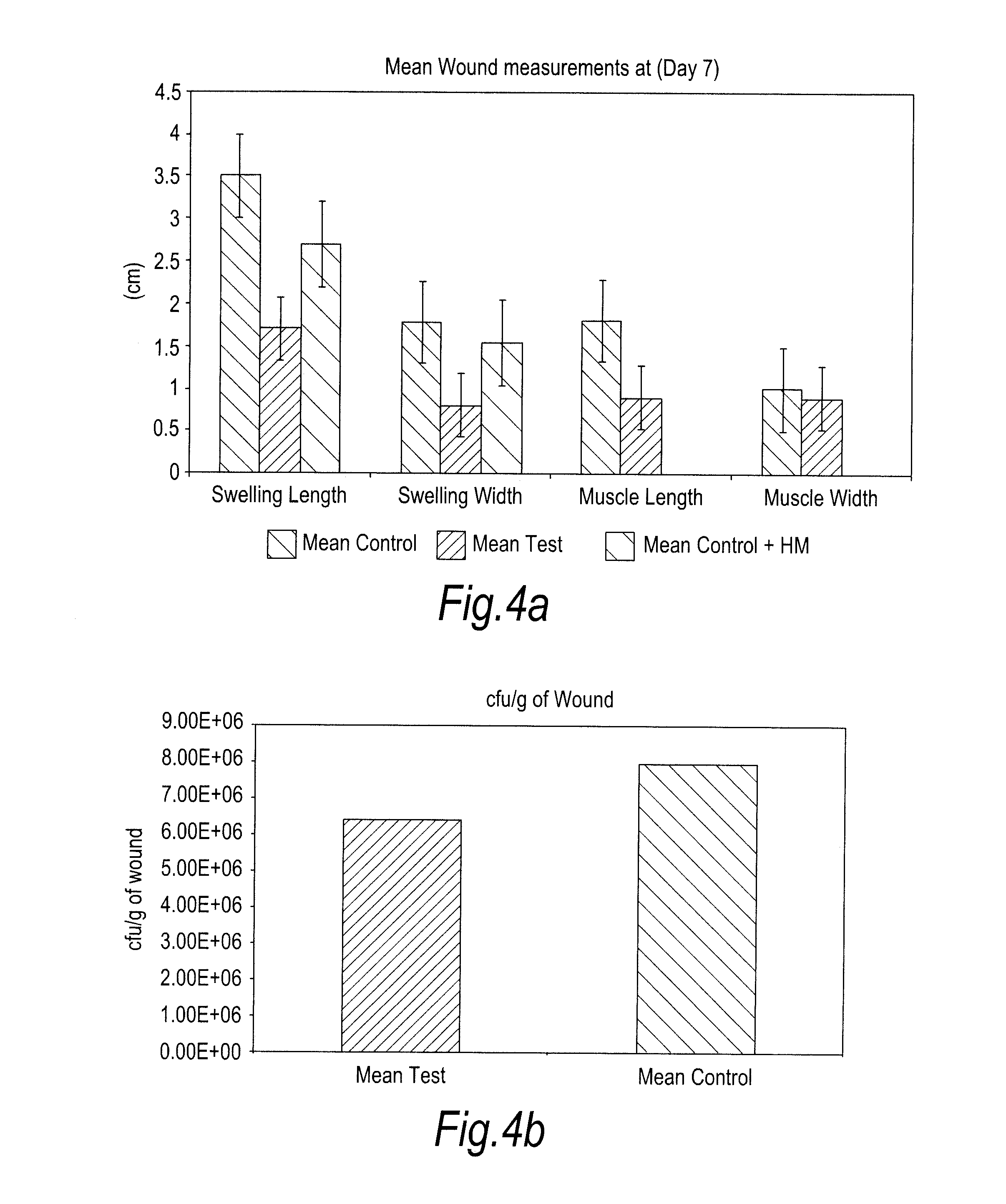Delivery of viral agents
a technology of viral agents and delivery methods, applied in the direction of antibacterial agents, drug compositions, biocides, etc., can solve the problems of diluted effectiveness, high health care costs, and often failed antimicrobial chemicals application to prevent infection from becoming established or recurring, so as to improve the growth rate of potato plants and reduce the incidence of infection , the effect of reducing the incidence of infection
- Summary
- Abstract
- Description
- Claims
- Application Information
AI Technical Summary
Benefits of technology
Problems solved by technology
Method used
Image
Examples
example 1
Effectiveness of LVCC for Delivery of Bacteriophage to Counteract Deep Wound Infection
[0106]FIG. 1 shows schematically an LVCC of the invention (1) pressed onto a wound (4) in a tissue (3) by dressing (2).
[0107]FIG. 2a is an inverted dressing of the invention incorporating an LVCC, shown in cross section. A pouch (5) encloses an LVCC (6) adhered to dressing (7), having top dressing surface (8)—hence it is inverted in the figure.
[0108]FIG. 2b shows schematically an LVCC (9) woven into a dressing (10). The two filaments (9a and 9b) are of different colours and have different bacteriophage attached. FIG. 3 shows a further schematic of a dressing (11) into which a filament with phage attached (12) is incorporated.
[0109]In a first example the effectiveness of an LVCC for delivering bacteriophage, to counteract bacterial infection within an infected deep wound environment using an in vivo model is demonstrated. Deep wounds penetrating several tissue layers and infected at all levels with ...
example 2
Extended Stability
[0113]LVCC's recovered from infected subjects were washed and stored at 4° C. and periodically evaluated for continuing antimicrobial activity against MRSA grown in vitro. In a series of experiments anti-MRSA activity was maintained as demonstrated by LVCC placed within a lawn of bacteria. Bacteriophage activity (as shown by the clearing seen around the recovered LVCCs) extended several weeks following storage—see FIG. 5.
example 3
Stability Conferred by LVCC Against Desiccation, Ultra Violet Radiation and Temperature
[0114]In these examples LVCC were generated using activated nylon polymer or cotton fibres as the carrier substrate. LVCC with attached bacteriophage were exposed to a series of environmental conditions, including dehydration, shown by the effect of relative humidity on bacteriophage survival (see FIG. 6a), ultraviolet light (see FIG. 6b) and elevated temperature (see FIG. 6c), all conditions known to denature free bacteriophages.
[0115]Three 2×1 cm phage strips were placed on LBM agar and exposed to UV light in the sterile cabinet for 5, 15 and 30 min. The strips were then turned over and placed on a fresh area of agar and the UV exposure repeated. Control phage strips were treated similarly, but were shielded from UV. The strips were then transferred to 15 ml LB broth, inoculated with 50 ul Staphylococcus aureus suspension and incubated.
Results—see Table 2
[0116]Conclusion: Attached phage can with...
PUM
 Login to view more
Login to view more Abstract
Description
Claims
Application Information
 Login to view more
Login to view more - R&D Engineer
- R&D Manager
- IP Professional
- Industry Leading Data Capabilities
- Powerful AI technology
- Patent DNA Extraction
Browse by: Latest US Patents, China's latest patents, Technical Efficacy Thesaurus, Application Domain, Technology Topic.
© 2024 PatSnap. All rights reserved.Legal|Privacy policy|Modern Slavery Act Transparency Statement|Sitemap



